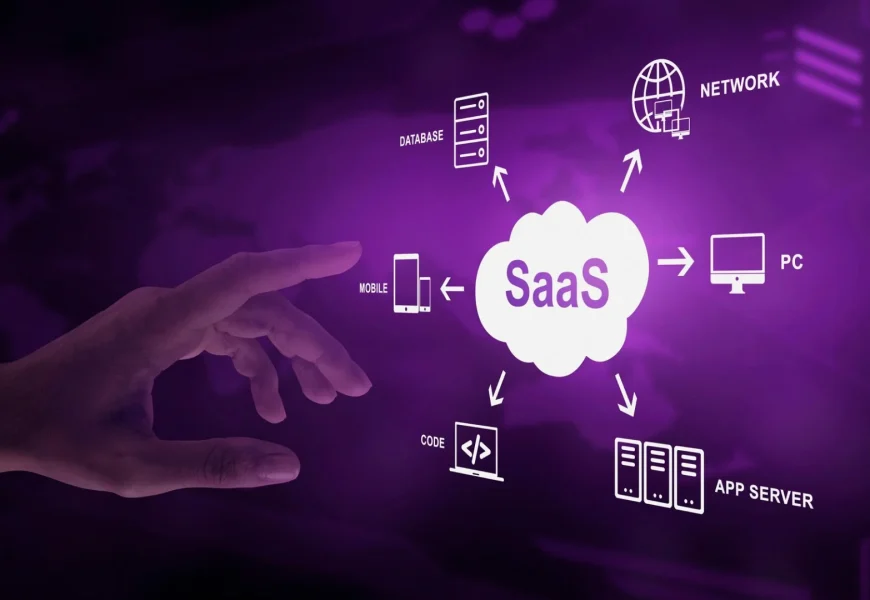The rise of Software as a Service (SaaS) has transformed the way businesses operate, offering scalable, efficient, and cost-effective solutions to meet the needs of a rapidly changing market. Understanding the SaaS product development lifecycle is crucial for companies looking to innovate and stay competitive. At Kryoverse Innovation, we specialize in guiding businesses through this complex process, ensuring that they harness the full potential of the cloud.
Understanding the SaaS Product Development Lifecycle
The SaaS product development lifecycle is a structured process that encompasses various stages, from idea conception to product launch and beyond. Each phase plays a vital role in creating a successful SaaS product that meets customer needs and stands out in a crowded marketplace. Here’s a breakdown of the key stages involved:
- Ideation and Research The journey begins with ideation, where teams brainstorm potential product ideas. Research plays a critical role here, involving market analysis, competitor assessments, and identifying user pain points. Understanding customer needs is essential to ensuring that the SaaS product will provide real value.
- Planning and Prototyping Once a viable idea is established, the next step is planning. This includes defining the product’s features, setting goals, and creating a roadmap for development. Prototyping allows teams to visualize the product and gather feedback early on. Using tools like wireframes or mockups, stakeholders can see how the product will function and make necessary adjustments before moving forward.
- Development The development phase is where the actual coding happens. Teams typically adopt agile methodologies to ensure flexibility and responsiveness to changes. Agile SaaS development emphasizes iterative progress through short development cycles, known as sprints. This approach allows for regular testing and feedback, making it easier to pivot as needed based on user input.
- Testing Quality assurance (QA) is critical in the SaaS product lifecycle. Testing should cover various aspects, including functionality, performance, security, and usability. Automated testing tools can expedite this process, ensuring that the product is robust and reliable before launch. Beta testing with real users can provide invaluable insights into how the product performs in a live environment.
- Deployment After thorough testing, the product is ready for deployment. This involves launching the SaaS application to the cloud, where users can access it. It’s important to have a clear deployment strategy, including how users will be onboarded and how support will be provided during this transition.
- Monitoring and Maintenance Post-launch, the focus shifts to monitoring and maintenance. Tracking user engagement, performance metrics, and feedback is essential to understanding how the product is being used and identifying areas for improvement. Regular updates and maintenance ensure that the product remains functional and relevant, adapting to changes in technology and user needs.
- Scaling As user adoption grows, scaling becomes a key consideration. This may involve optimizing infrastructure to handle increased traffic, enhancing features based on user feedback, and expanding into new markets. A scalable SaaS product can adapt to growing demand without compromising performance.
- End-of-Life Eventually, every product reaches its end-of-life stage. This may involve phasing out features, transitioning users to new products, or conducting a complete sunset of the service. Properly managing this process is essential to maintain customer trust and satisfaction.
The Importance of Agile in SaaS Development
Agile methodologies are particularly well-suited for the SaaS product development lifecycle. Agile promotes collaboration, flexibility, and continuous improvement—qualities essential for success in a fast-paced digital environment. By breaking the development process into manageable sprints, teams can respond to changes and user feedback more effectively. This iterative approach fosters innovation, allowing for regular updates that keep the product fresh and aligned with market demands.
At Kryoverse Innovation, we emphasize the importance of agile practices in our SaaS development projects. Our teams work closely with clients to ensure that their vision is realized while maintaining the flexibility to adapt as needed. This collaborative approach not only enhances product quality but also strengthens the partnership between developers and stakeholders.
Leveraging SaaS Development Lifecycle for Success
Navigating the SaaS development lifecycle can be complex, but with the right strategies in place, businesses can create products that resonate with users. Here are a few key takeaways for success:
- Prioritize User Feedback: Engaging with users throughout the development process is crucial. Regular feedback loops help identify pain points and areas for improvement, ensuring that the final product meets their needs.
- Invest in Quality Assurance: Rigorous testing cannot be overstated. A robust QA process minimizes bugs and enhances user experience, leading to higher satisfaction rates.
- Stay Agile: Embrace flexibility in the development process. An agile mindset allows teams to pivot quickly and adapt to changing market conditions or user requirements.
- Focus on Scalability: As your user base grows, ensure that your infrastructure can handle increased demand. This involves choosing the right cloud services and planning for future growth from the outset.
- Plan for the Long Term: Consider the entire lifecycle of the product, including potential end-of-life scenarios. Being proactive about transitions helps maintain customer loyalty and trust.
Read More: Case Study on Motel Management
Conclusion
The SaaS product development lifecycle is a multifaceted process that requires careful planning, execution, and adaptation. At Kryoverse Innovation, we are dedicated to helping businesses in the USA navigate this journey successfully. By leveraging agile methodologies and a user-centered approach, we empower our clients to create SaaS products that not only meet market demands but also drive innovation and growth.
Building in the cloud is not just about technology; it’s about understanding user needs and delivering solutions that resonate. By following a structured SaaS development lifecycle, businesses can transform their ideas into successful products that thrive in today’s competitive landscape. Embrace the journey, and let Kryoverse Innovation guide you every step of the way.











